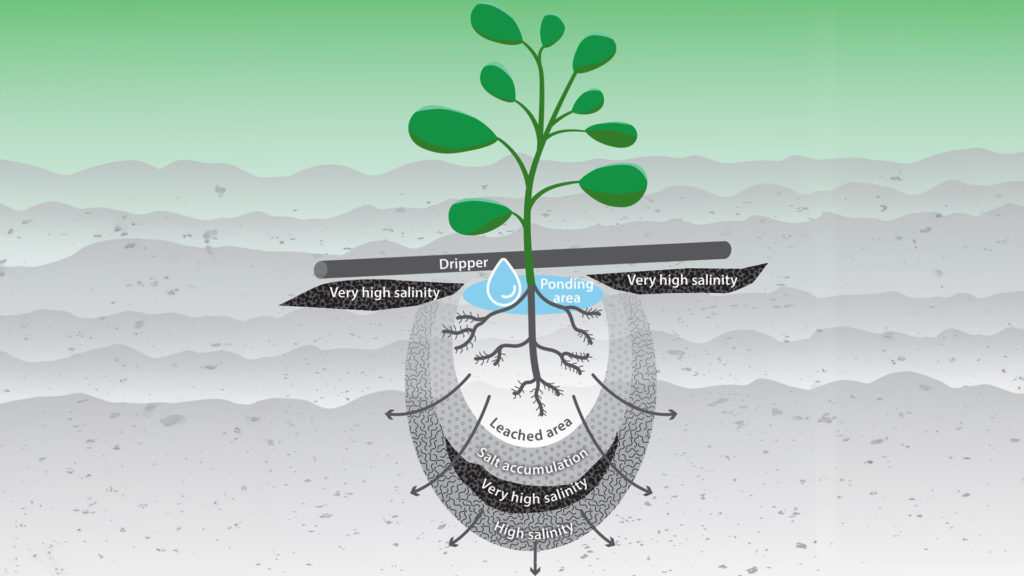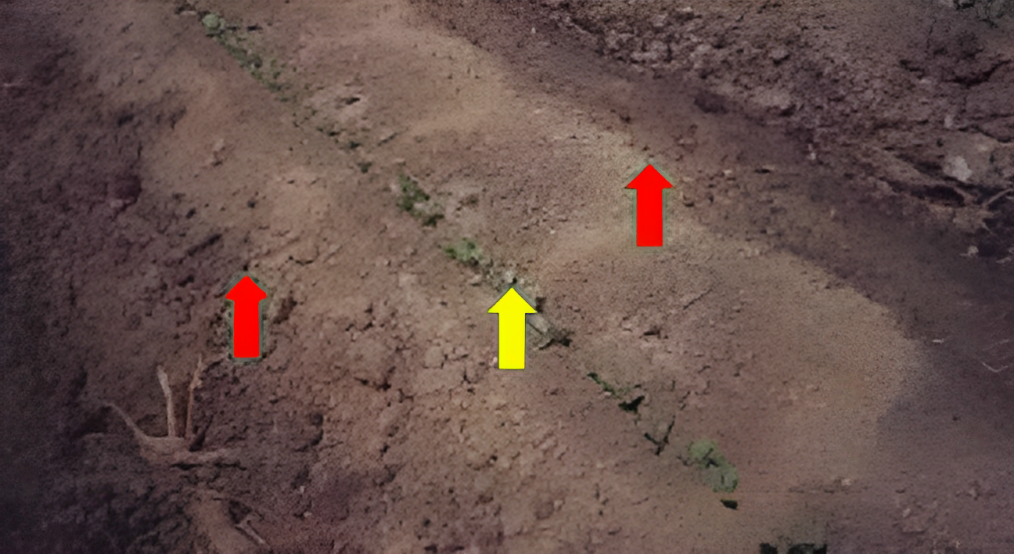
The advantage of close emitter drip spacing in managing salinity
The risk of salinity buildup in a plant bed occurs from salts either occurring in the soil or being applied from a water source.
In situations where salts that are adverse to plant health can accumulate in the root zone, managing the movement of these salts within the root zone and soil profile can benefit agronomic outcomes.
Salt movement in drip irrigation

A visual of the movement of salts within a soil profile using drip irrigation.
It is evident in the image that the applied water moving through the soil moves the salts with it. The salts then accumulate at the outer edges of the wetted zone (surface, side, and lower regions).
If each emitter creates a wetted zone that does not merge with the neighboring wetted zone, then there can be an accumulation of salts between the emitters along the row and between plants, or within the effective root zone of plants along the row.
Salt management cannot be achieved either when drip tape is used where the emitters are spaced too wide creating wetted zones that do not meet or fully merge.
The image above shows the movement of salts within a soil when viewed from above. The red arrows point to the outer edges of the wetted zone and the accumulation of salts (white colour) and the yellow arrow points to where the salts have accumulated along the plant row between the two emitters.
With close emitter spaced drip tape, a continuous wetted zone can be created along a row with the salts being pushed below the active root zone and to the outer edges of the bed. This creates a root zone with a relatively lower level of salts that can be tolerated by the plant.
Want to know more? Download the full guide here >>






